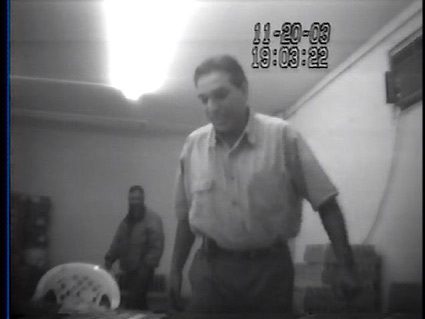In the particularly dramatic scene of HBO’s The Wire above, a group of Baltimore police brass is instructed to artificially deflate felony and murder statistics or be ousted from their jobs. “I don’t care how you do it, just fuckin’ do it,” snarls Baltimore Police Deputy Commissioner of Operations William A. Rawls.
Inside a lecture room at John Jay College in New York City two summers ago, Molloy College criminologist and retired New York City Police Department Captain John Eterno lectured a group of FBI agents about nearly identical scenarios unfolding within the NYPD’s walls. He and his John Jay colleague Eli Silverman had recently published a detailed survey (that later became a book) of 400 retired NYPD commanders who served under the CompStat system, a computer program used to compare crime rates and performance across precincts.
Most of the commanders claimed they were “under enormous pressure” to routinely underreport or misclassify serious crimes, which were then excluded from city’s crime reports to the state and FBI. “Once you have one ‘CompStat’ meeting where they’re screaming and yelling at you about your crime numbers,” Eterno explains, “you get the hint and then you do what you can to make sure those numbers are looking the way they want them to.”
After the presentation, some of the more junior FBI agents approached Eterno. “This is falling on deaf ears,” they whispered, referring to their superiors.
On June 11, the FBI released its Preliminary Annual Uniform Crime Report (UCR), a compilation of statistics from thousands of local law enforcement agencies that is used to calculate state and national crime rates. Eterno believes that the data set is populated with the number-fudging of large urban police departments with systems similar to the NYPD.
When asked how confident the agency is in its stats, given recent controversies, FBI spokesman Stephen Fischer wrote in an emailed statement that the agency “relies on the integrity of reporting agencies to report crime in accordance with FBI UCR policies.” “Given the fact participation in UCR is on a voluntary basis, no sanction can be applied for noncompliance,” he added.
While underreporting crime may score police chiefs and mayors short-term political points, it can also prevent police officers from effectively fighting crime in the areas that need them the most, according to Eterno. Departments that mismanage the numbers may miss crucial crime patterns, lose out on opportunities to acquire extra officers and patrols, and complicate social research studies. UCRs are also used as a variable in calculating federal and state funding, so if they are flawed, resources don’t get allocated as efficiently.
The FBI conducts “Quality Assurance Reviews” in each state designed to “assess the validity of crime information,” Fischer says. But the audits only occur every three years, include between six to nine departments per state selected at random, and review a sample of just 300 hundred incidents per agency.
In March, the Village Voice obtained an internal NYPD report that it says confirmed the 81st Precinct had discouraged people from filing reports and cited “many other instances…where crime reports were missing, had been misclassified, altered, rejected, or not even entered into the computer system that tracks crime reports.”
The Milwaukee Journal Sentinel recently published an investigation that revealed hundreds of violent crimes were misclassified by the Milwaukee Police Department as less serious crimes that were not reported to the FBI. In one instance, the aggravated beating of two-year-old boy Karmari Curtis, which landed him in intensive care for six days, was downgraded to a “simple assault,” a category reserved for a slap or shove.
At the request of the department, Milwaukee’s crime stats are currently undergoing an FBI audit. But this year’s numbers appeared as reported in the FBI report, as did New York’s. The last time New York was audited by the FBI was in 2007, before both Eterno’s study or the internal report. Based upon a trend analysis, which compares reported numbers to an agency’s previous data, neither agency “required a footnote on reported data for this report,” Fischer wrote. Any discrepancies from audits are passed along to state and local agencies, which are then left with the discretion to make the corrections.
Stanford University law professor Robert Weisberg stressed that even without human error or lapses in ethics, recording crime statistics can be an imperfect science. “A lot of the problems are essentially derivatives from the complexities of definitions of crimes and the number of stages from criminal investigation [to] prosecution,” he says. “It’s kind of a moving target, even if everybody’s acting in good faith.”
But increasing oversight can only help crime victims, who can otherwise suffer because of missed cues or mismanaged resources. “If you don’t have those crime reports, you’re stifling your own ability to fight crime,” Eterno says.
He recommends that departments take an “integrity testing” approach to maintaining crime stats. Internal Affairs officers posing as victims can approach colleagues with reports of crimes and then later monitor whether they are recorded correctly. The investigations may not be as glamorous as the standard undercover fare, but they may be just as crucial.
This article has been revised.















